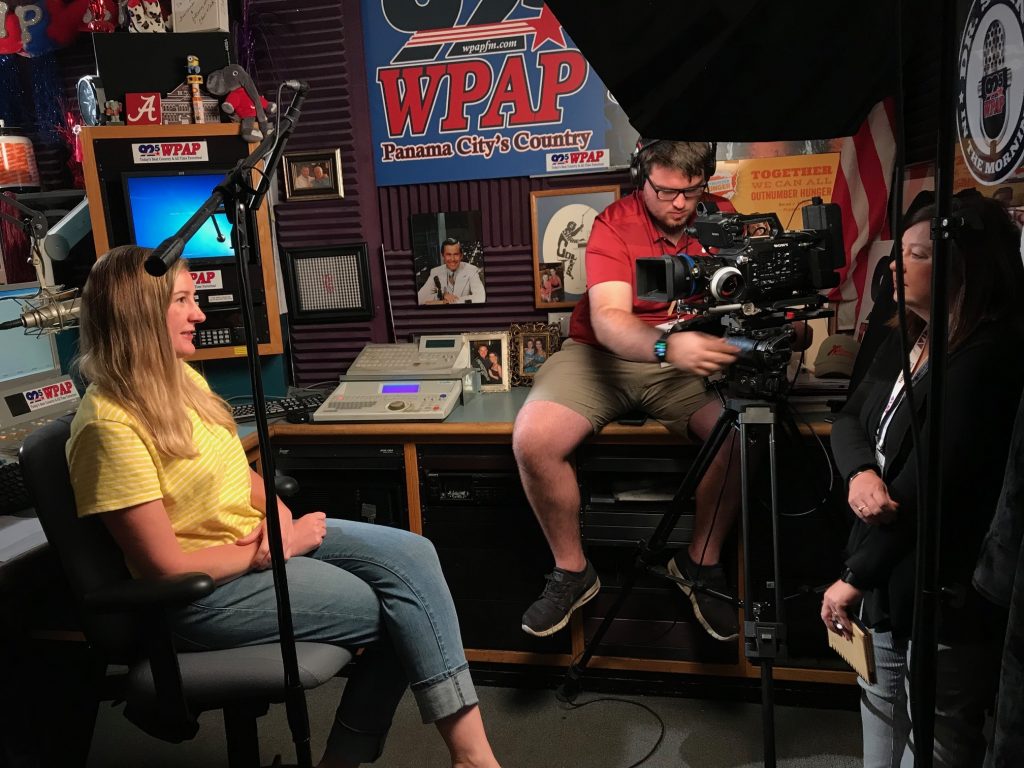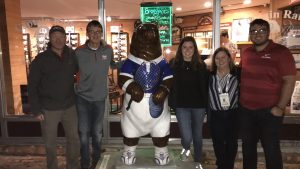
Documentary Showcases Local Broadcasters During 2018 Hurricanes
A new documentary highlighting the role of broadcasters during disasters was recently released by a University of Alabama journalism professor.
The videos by Dr. Chandra Clark, UA assistant professor of journalism and creative media, are part of the “First Informers” series and focus on broadcast coverage of hurricanes Florence and Michael, which struck North Carolina and Florida, respectively, during 2018. Developed in collaboration with the University of Oklahoma, the series has, over the last eight years, documented the important roles broadcasters fill during emergencies.
In the award-winning series, viewers hear directly from news anchors, field reporters, meteorologists and local officials who live and work in communities affected by the weather events.
“With the spotlight on journalists right now, it’s very dear to my heart to highlight the crucial role that they’re playing and how many of them are affected by these disasters, too,” said Clark. “They’re experiencing the same pain and going through the same adjustments as the people they serve.”
The First Informers videos are shared with regulators at the Federal Communications Commission, the White House, members of Congress, and state broadcast associations to demonstrate the unique role broadcasting fulfills during emergencies. The Omnibus spending bill, which passed into law in March of 2018, included an allocation of $1 billion dollars for radio and television broadcasters for the spectrum repack, and it broadened the definition of “first responders” to include these broadcasters. This provides special consideration for broadcasters in times of emergency, including access to necessities such as emergency generators in crisis areas.
“These videos served as a reminder to Washington lawmakers and regulators of the enduring ‘first informer’ role that can be played by local broadcasters in times of crisis,” said Dennis Wharton, executive vice president of communications, National Association of Broadcasters. “In the final analysis, it is generally the local radio and TV station that ‘gets the word out’ and saves lives in Tornado Alley, in California wildfires, during Superstorm Sandy and when there is an Amber Alert. NAB is proud of our partnership with Chandra and University of Alabama students who have performed exceptional work capturing the depth and breadth of local broadcasters’ work during ‘life or death’ situations.”

The First Informers project series has documented local broadcasting in several notable severe storm events over the past eight years. Clark, Scott Hodgson, a University of Oklahoma professor, and students from Oklahoma and Alabama have partnered with the National Association of Broadcasters and the Broadcast Education Association to produce 31 videos (or mini-documentaries).
These include the 2011 EF4 tornado in Tuscaloosa, the 2011 EF5 tornado in Joplin, the 2012 hurricane known as “Superstorm Sandy,” a 2013 EF5 tornado which struck Moore, Oklahoma, Hurricanes Harvey and Irma in 2017 and Hurricanes Florence and Michael in 2018.
“There is no way projects of this magnitude can be done without a team effort,” says Hodgson, who serves as director for these projects that Clark produces. “The time from when the weather emergency hits until boots hit the ground from our crew is incredibly short. It takes an exceptional producer to pull off what Chandra is able to do. Her vast wealth of industry experience combined with her innate storytelling ability and leadership skills is the only reason we can do these projects.”
